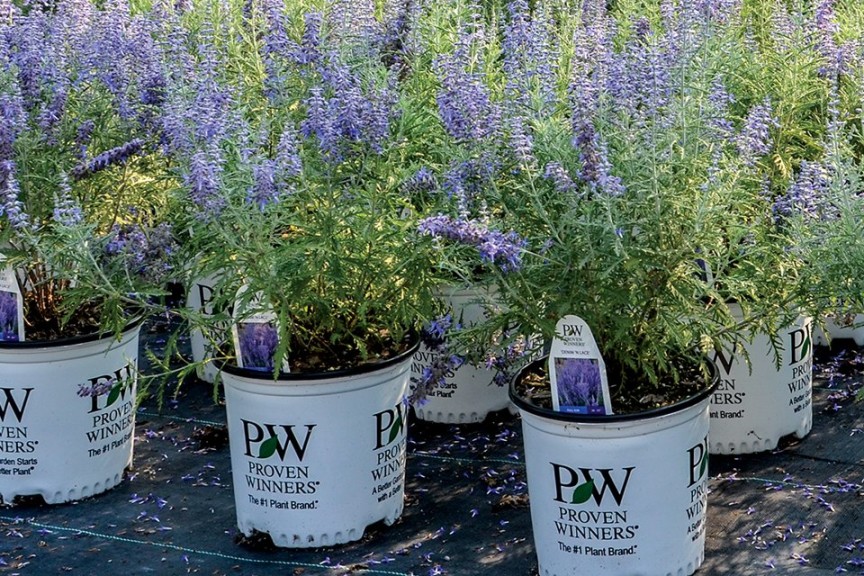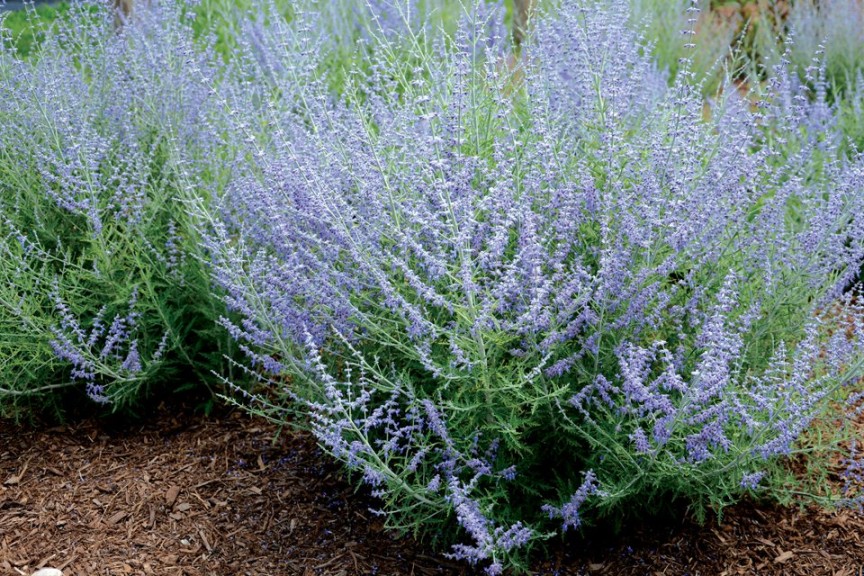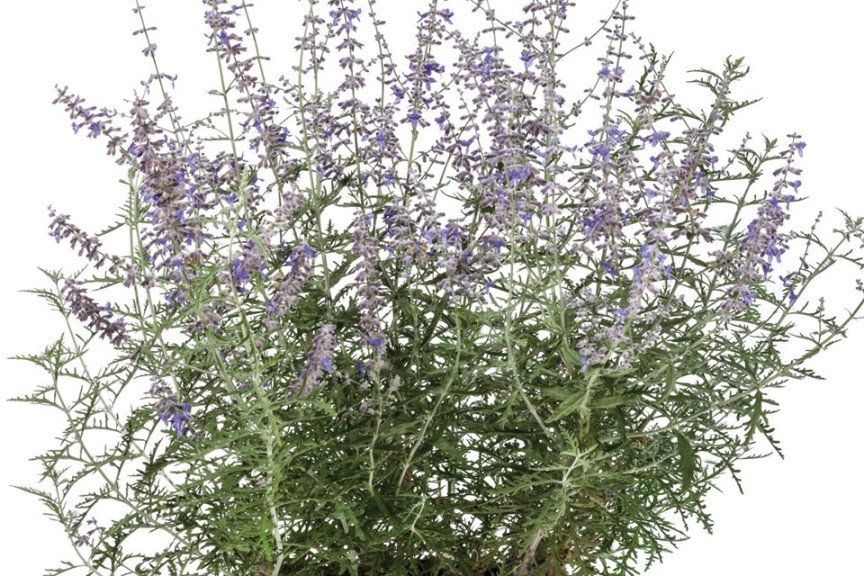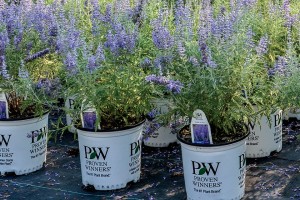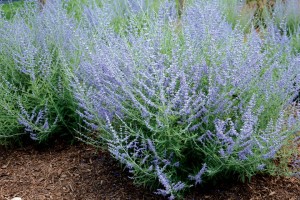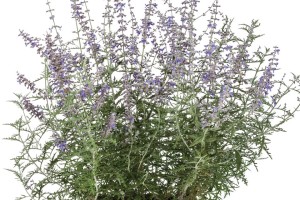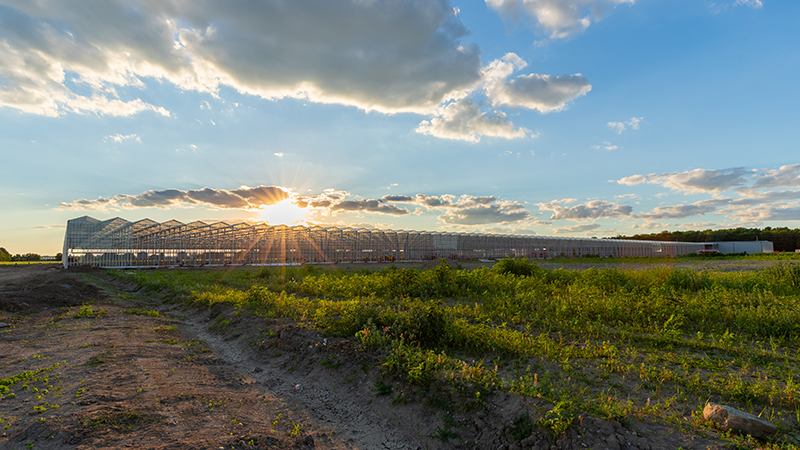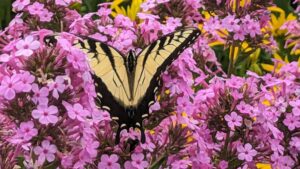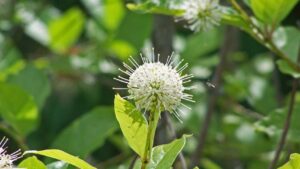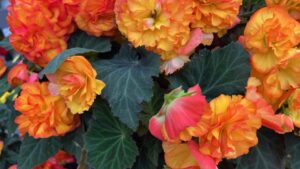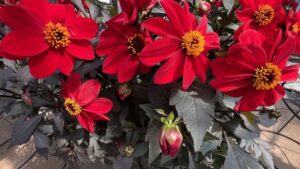The Recipe For Growing Beautiful Perovskia
Perovskia, or Russian Sage, has been a long-time staple of landscapes and gardens due to its unique texture, airy look and drought tolerance. Growers love it because it is easy to grow. Taller varieties, such as Perovskia atriplicifolia, tend to lodge and require more work to grow correctly. To get great-looking finished Perovskia, we have some tips and recommendations.
[blackoutgallery id=”77984″]
Potting And Timing
Based on our trials, we recommend planting bareroot Perovskia in spring for a quick-turn crop. If you prefer small plugs, such as a 72-count plug, we recommend planting in late summer of the season prior to sales. Both bareroot and summer-planted plugs finish in premium 1-gallon containers. Spring planting small plugs is not recommended, because they typically require two plugs per pot to bulk up properly. If you do choose this route, go with a smaller container to finish, such as a trade 1-gallon container.
When planting, make sure the bareroot crown is at the soil line. Spring-planted bareroot should finish in six to eight weeks based on 68°F to 72°F growing temperatures. Small plugs (72-count) will finish in around 10 to 12 weeks.
Whether starting with plugs or bareroot material, use a well-drained soil mix composed of bark and peat with a pH of 5.8 to 6.5.
Vernalization
Perovskia do not require vernalization to bloom, but it is beneficial for a better performing plant. If you receive bareroot plants in spring, these will have already been vernalized. If you do plan on vernalizing your plants, Perovskia require six to nine weeks of vernalization.
Cultural Recommendations
Fertility. We recommend 75 to 100 ppm nitrogen constant liquid feed for optimum growth at every watering or incorporating slow release fertilizer at a rate of 1.0 to 1.25 pounds per cubic yard of growing media. The recommended EC rate is 1.5 to 2.0, using the pour-thru method.
Moisture. In the landscape, Perovskia are well-known for being drought tolerant. This is generally true in production, and you should grow your plants moderately moist to slightly dry. Perovskia will do well with either drip irrigation or overhead irrigation. Be sure to irrigate in the morning to allow the foliage to dry by evening. Perovskia develop root rot if they remain under wet conditions for a long period of time.
Lighting. Perovskia is day length neutral and does not require artificial lighting to flower. However, high light levels are recommended during the growing season — this is a full sun plant. Grow this crop under clear plastic indoors or in direct sunlight outdoors. Proper lighting will keep your plants more compact; low light levels will cause the plant to stretch.
Temperature. Grow Perovskia indoors at 68°F to 72°F or grow them outdoors under natural temperatures in summer once all chance of frost has past. Once finished, these plants can be held at 40°F to 50°F. If grown outdoors in late spring for early summer sales, the weeks to finish will be longer than six to eight weeks because of the cooler temperatures.
Overwintering
Perovskia is a very hardy perennial. The best way to overwinter plants is in a minimally heated greenhouse kept slightly above freezing. However, they may also be overwintered outdoors under a heavy frost blanket or in an unheated greenhouse. Bait liberally for rodents over the winter and do not let plants sit wet or crown and root rots may settle in.
Pests And Diseases
Aphids, leaf hoppers, spider mites and whiteflies tend to be the most common pests seen on Perovskia crops. Root rot and stem blight are the most common diseases. Most diseases can be avoided using proper growing practices.
Finishing Tips
Spacing. Compact Perovskia cultivars do not require as much space as taller varieties with looser habits. Space these pots slightly to facilitate light penetration for each plant. Good spacing also allows for better airflow, which prevents foliar diseases.
Pinching is very important when planting from a small plug to help the plant bulk properly and increase basal branching. Pinch plants two weeks after transplanting. A second pinch might be necessary. Growing from bareroot should not require pinching or shearing.
Forcing. Starting with a bareroot planted in spring or a small plug planted in summer and vernalized, Perovskia will bloom in 10 to 12 weeks at 68°F to 72°F.



